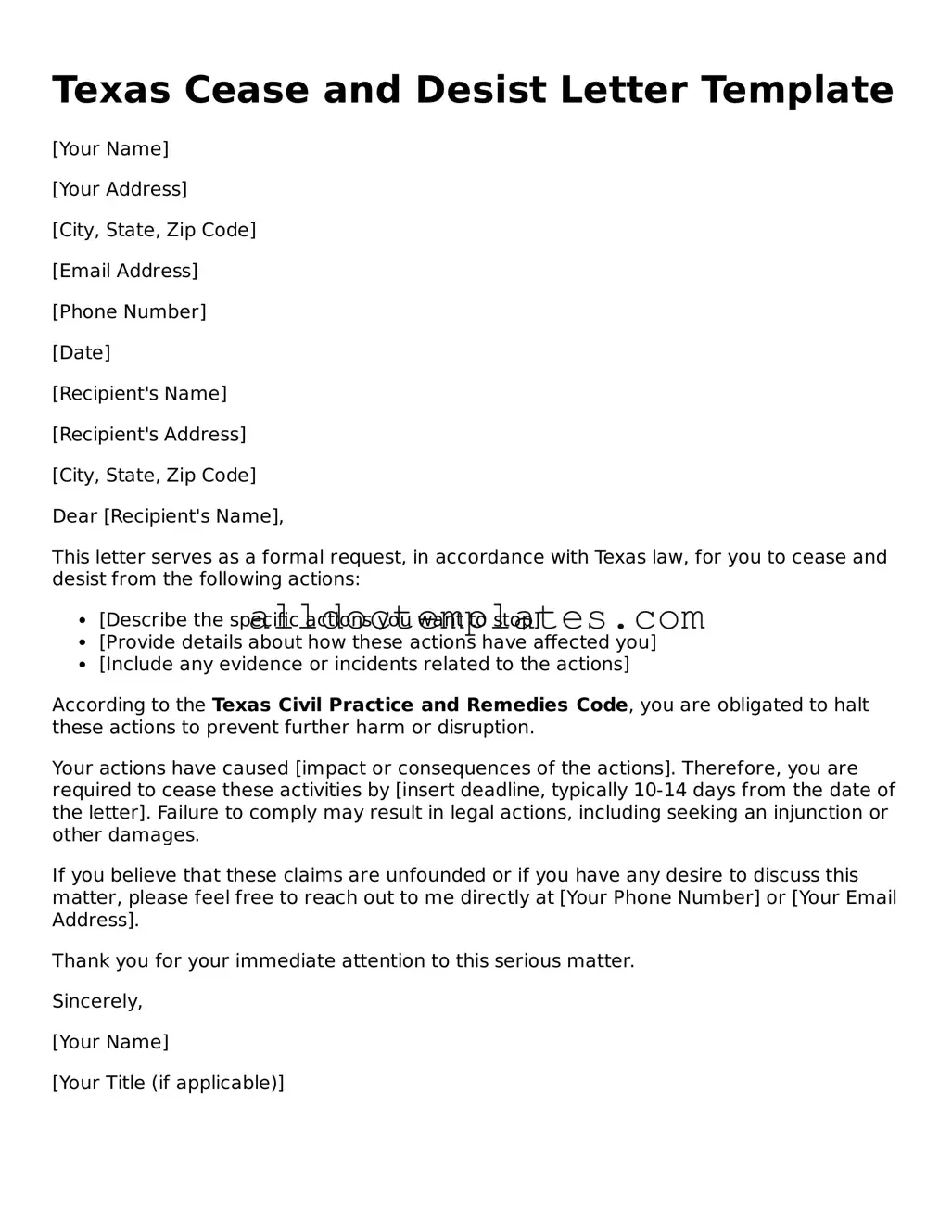Texas Cease and Desist Letter Template
[Your Name]
[Your Address]
[City, State, Zip Code]
[Email Address]
[Phone Number]
[Date]
[Recipient's Name]
[Recipient's Address]
[City, State, Zip Code]
Dear [Recipient's Name],
This letter serves as a formal request, in accordance with Texas law, for you to cease and desist from the following actions:
- [Describe the specific actions you want to stop]
- [Provide details about how these actions have affected you]
- [Include any evidence or incidents related to the actions]
According to the Texas Civil Practice and Remedies Code, you are obligated to halt these actions to prevent further harm or disruption.
Your actions have caused [impact or consequences of the actions]. Therefore, you are required to cease these activities by [insert deadline, typically 10-14 days from the date of the letter]. Failure to comply may result in legal actions, including seeking an injunction or other damages.
If you believe that these claims are unfounded or if you have any desire to discuss this matter, please feel free to reach out to me directly at [Your Phone Number] or [Your Email Address].
Thank you for your immediate attention to this serious matter.
Sincerely,
[Your Name]
[Your Title (if applicable)]
